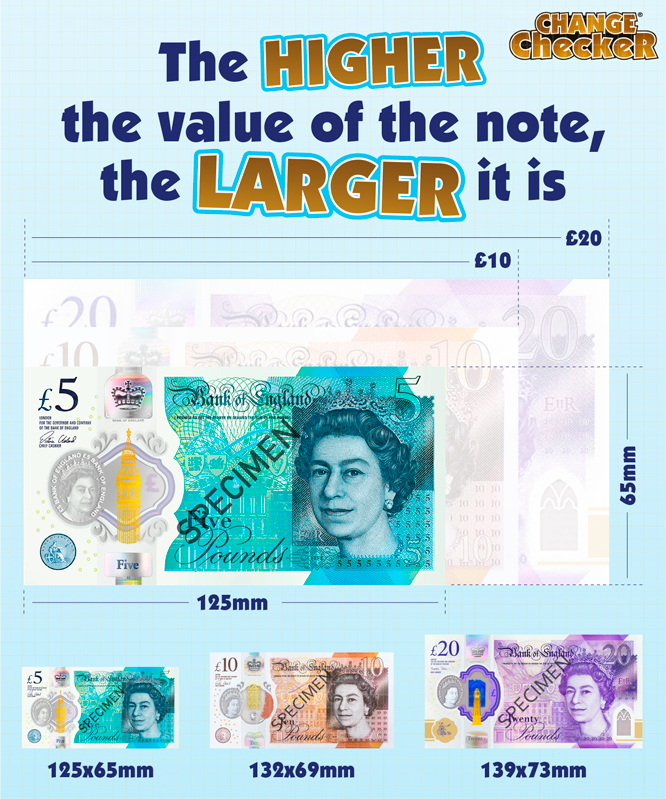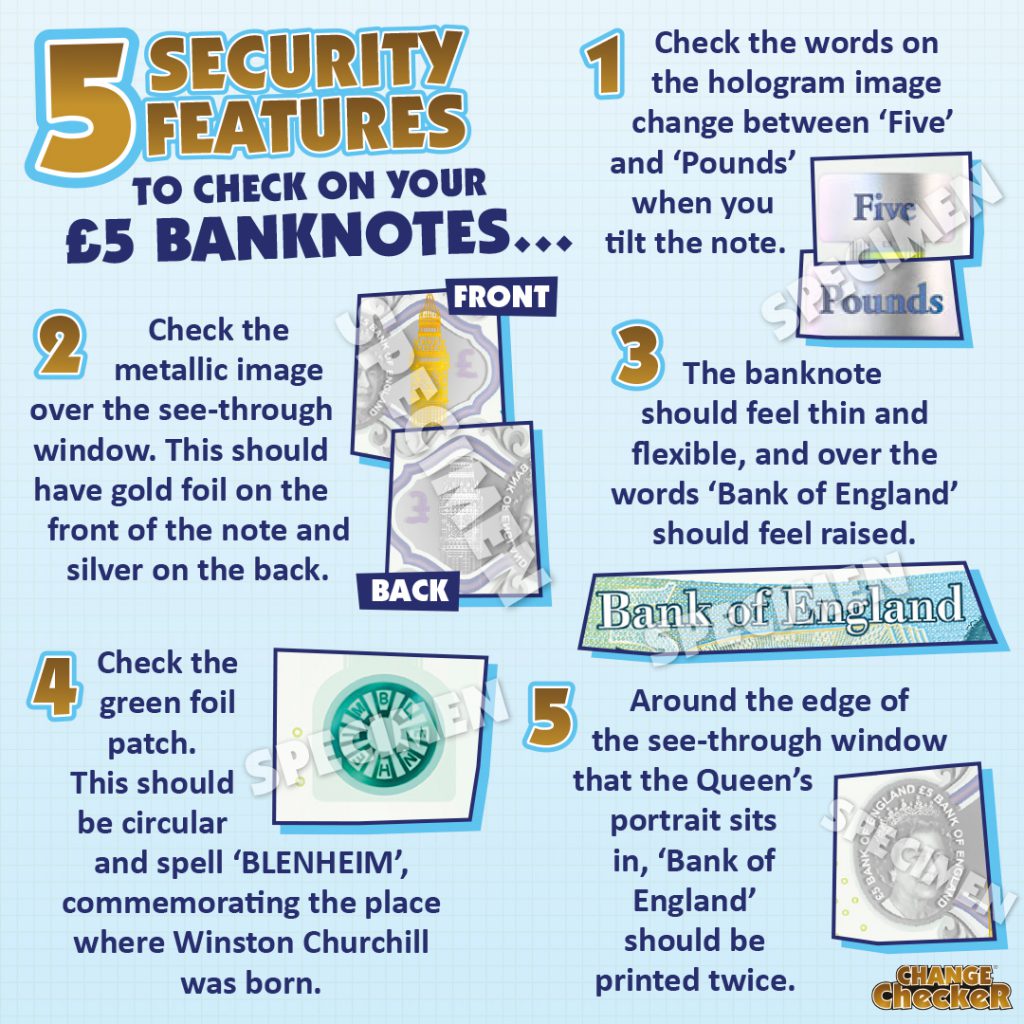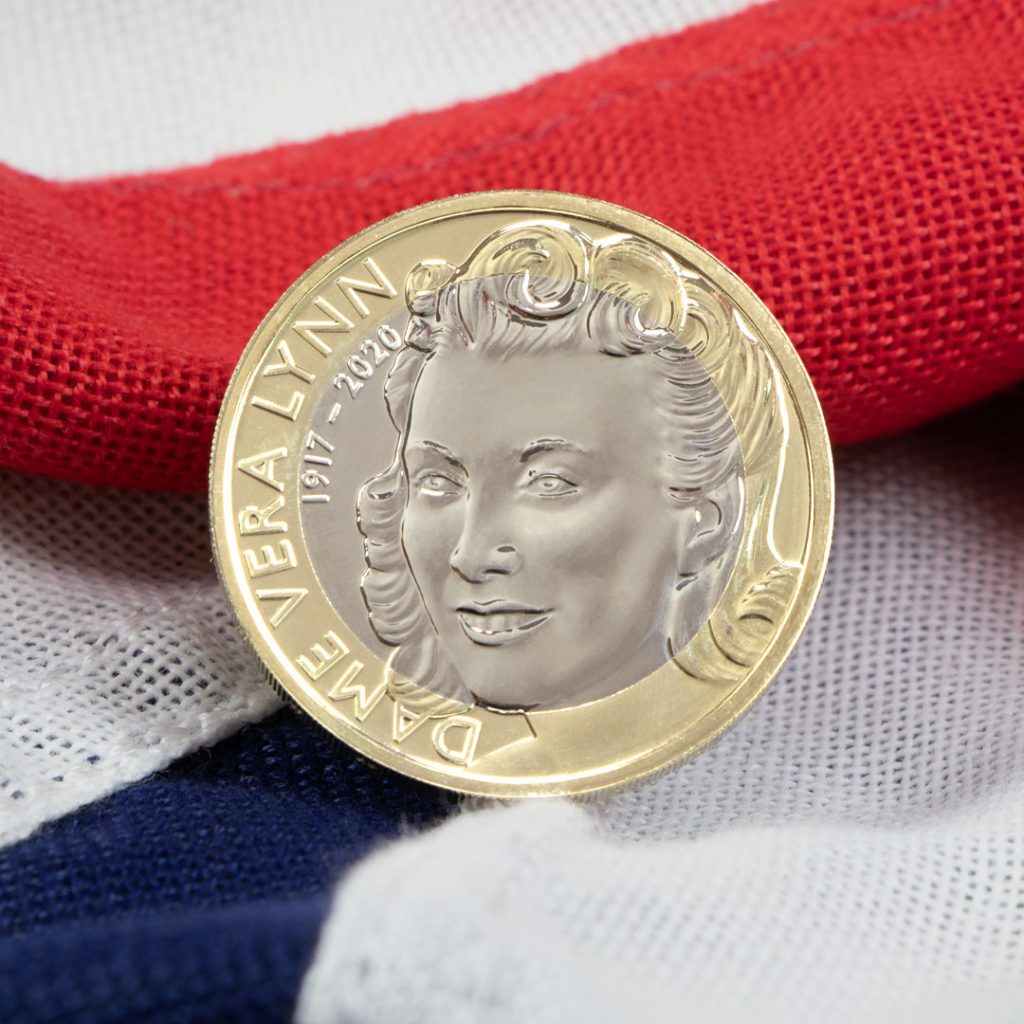Uncategorised
How to spot a counterfeit banknote!
In 1725, printed banknotes were first introduced in the UK, with the purpose of fixed denominations. The £20 banknote came first and following a shortage of metallic currency during the Seven Years’ War in 1759, £10 and £15 notes were issued.
The £5 note was the last to be introduced in 1793. But since their introduction, banknotes have been subject to fraudulent behaviour, so much so, additional banknotes have been executed partly to make forgery of such more difficult.
Fraudulent notes are also called ‘counterfeit banknotes’ and although less and less are going into circulation — with less than 1 in 40,000 banknotes being counterfeit in 2021 — it’s still an important topic to discuss!
Although polymer banknotes are a lot harder to replicate than the traditional paper ones, you should still check your notes when you receive them. But the questions is, how do you spot a counterfeit banknote?
Sizing
For every polymer banknote, a good starting point is to look at its size.
The higher the value, the larger it is. Here we can see the approximate sizes of the £5, £10 and £20 polymer banknotes:

Security Features
Crucially, you should always check your polymer banknotes for the following key security features:

Changing hologram:
- All polymer notes when tilted from side to side and up and down, should feature word changes within their holograms.
- For the £5 banknote, the words should change between ‘Five’ and ‘Pounds’, the £10 banknote between ‘Ten’ and ‘Pounds’ and so on.
See-through windows:
- Each banknote of denomination has a metallic image over the see-through window on it.
- Both the £5 and £10 polymer notes have gold foil on the front of the note within this part and silver on the back.
- The £20 note has a blue and gold foil on the front of the note for the metallic image and silver on the back.
- Lastly, the £50 note has gold and green foil on the front and silver on the back.
Feel of polymer and raised print:
- Polymer is a thin and flexible material so check that the material of your banknote feels this way.
- On each denomination banknote as well, the words ‘Bank of England’ should feel raised.
Foil patches:
- Each banknote denomination will have a different foil patch on it.
- For the £5 note, this is a green foil patch — it is circular and spells ‘BLENHEIM’ to commemorate where Churchill was born.
- The £10 note has a copper foil patch, and this is shaped as a book.
- Check it contains the letters ‘JA’, in tribute to Jane Austen.
- A purple foil patch shaped in a circle with a ‘T’ at its centre, to represent JMW Turner, is imprinted on the £20 note and lastly, a metallic red foil patch can be found on the £50 note and contains the letters ‘AT’ for Alan Turing.
- The patches can all be located behind the silver crown on the front of the notes.
The queen’s portrait in the see-through window:
- The Queen’s portrait which is printed within the see-through window can be found on all the banknotes with the respective denomination and the words ‘Bank of England’ printed twice.
- For example, on the £5 note the inscription ‘£5 Bank of England’ will be printed twice around the windows edge.
This is a just a small selection of the security features that you can find on your polymer banknote. Can you name some of the other features? Let us know in the comments below!
Counterfeit banknotes have no monetary value and cannot be reimbursed. The best thing to do if you encounter a counterfeit banknote is take it to your nearest police station.
They will ask you to fill out a form and once taken from you, will send the suspect note(s) to the National Crime Agency and if found to be counterfeit, to the Bank of England for further examination.
If you’re interested in coin collecting, our Change Checker web app is completely free to use and allows users to:
– Find and identify the coins in their pocket
– Collect and track the coins they have
– Swap their spare coins with other Change Checkers
Sign up today at: www.changechecker.org/app
‘Forces Sweetheart’, Dame Vera Lynn, commemorated on UK £2 coin

In 2020, we received the sad news that Dame Vera Lynn had sadly passed away. The iconic wartime singer was famous for boosting the morale of British troops during WWII.
Coined as the ‘forces sweetheart’, her renditions of We’ll Meet Again, the White Cliffs of Dover and I’ll be Seeing You, became synonyms with wartime.
Dame Vera Lynn played such a key role during wartime that Buckingham Palace sent a private message of condolence to her family.
And in 2022, to commemorate her life and achievements, The Royal Mint commemorates her on a brand new £2 coin.
Designed by The Royal Mint, this £2 features a detailed portrait of Vera Lynn as she appeared during the height of her fame.
The popularity of her songs carried across generations. In 2020, when many of us were forced apart from one another, her famous song ‘We’ll Meet Again’ spoke to the nation once more, with a similar level of emotion as they did in 1940 – a testament to her charm, skill, and beautiful voice.
To add this stunning commemorative £2 coin to your collection today for JUST £9.50 (+p&p), simply click here >>
To learn more about other UK coins which have been issued to commemorate wartime, continue reading…
2020 Victory in Europe £2
2020 marked 75 years since Victory in Europe Day, commonly known as VE Day.
This monumental day signified the end of the Second World War in Europe and brought long-awaited peace following Nazi Germany’s unconditional surrender of armed forces on the 8th May 1945.
To commemorate this pivotal moment and one of the most historically significant days in British history, a UK £2 coin was issued.
Dominique Evans‘ design features a woman holding a newspaper aloft in crowd of celebrating people, set against a backdrop of the word VICTORY.
The edge inscription reads ‘JUST TRIUMPH AND PROUD SORROW’ which is incredibly fitting for a coin which marks such a historic anniversary.
You can secure this coin for your collection for JUST £9.50 (+p&p) by clicking here >>
2019 D-Day £2
In 2019, The Royal Mint issued a £2 coin commemorating the 75th Anniversary of D-Day, the largest seaborne invasion in history.
The invasion took place on the 6th June 1944 and began the liberation of German occupied France and laid the foundations for the Allied Victory.
Initially issued as part of the 2019 Annual Coin Set, the D-Day £2 is favoured among collectors for its innovative design by Stephen Taylor.
The reverse features arrows pointing across the English Channel to Normandy; each arrow has one of the five code-names for the beaches where Allied Troops landed: Utah, Omaha, Gold, Juno and Sword.
2005 St. Paul’s Cathedral £2
In 2005, The Royal Mint issued a second £2 in the new bi-metallic specifications to commemorate 60 years since the end of the war.

On 8th May 1945, Winston Churchill announced VE Day – Victory in Europe, which marked the end of World War Two.
Interestingly, the reverse design depicts St. Paul’s Cathedral. This is because the cathedral was one of only a few structures which survived the Blitz to become a great symbol of hope to a war-torn nation.
The edge inscription reads ‘IN VICTORY: MAGNANIMITY, IN PEACE: GOODWILL’ which is part of the famous maxim that prefaces Churchill’s history of the Second World War.
10,191,000 entered circulation. Have you found one in your change? Comment below!
Secure the 2022 UK Dame Vera Lynn £2 for your collection today!
Official UK £2 coin celebrates 150 years of the FA Cup!
Can you work out the connection between these three events?
- In 2011, Yaya Toure’s 76th minute goal led Manchester City to seal their first major trophy in 35 years.
- The 1999 semi-final had one of the best solo goals in history, played between two of the biggest rivals in footballs.
- Arsenal beat Chelsea 2-0 in the 2002 final.
These are some of the very best moments in FA Cup History!
Producing hometown heroes, as underdogs play alongside Premier League giants, these unforgettable moments unite football fans, making the FA Cup one of the greatest knockout tournaments in the world.
The 150th Anniversary of the FA Cup 2022 £2 coin
This year, to celebrate a remarkable 150 years of the FA Cup, a brand new UK £2 coin has been issued featuring the famed FA Cup Trophy.
An absolute must-have for collectors and fans of the beautiful game alike, this is the perfect keepsake to commemorate such an incredible anniversary in football history.
Your 2022 UK 150th Anniversary of the FA Cup £2 coin has been struck to a superior Brilliant Uncirculated quality and protectively encapsulated in official Change Checker packaging to preserve it for generations to come.
You can secure this brand new coin for your collection for just £9.50 (+p&p) >>
With a one of the largest fan-bases in the UK, football memorabilia is in high demand by collectors all over the world.
We’ve even seen huge popularity for Football themed coins in the past. Continue reading to find out our top UK coins that have celebrated this fantastic sport…
Olympic Football 50p

In 2012, the release of the Olympic 50p series kick-started a collecting frenzy across the nation.
It’s estimated that around 75% of these coins have been removed from circulation by collectors which means they are incredibly sought-after, especially considering these 50ps have some of the lowest mintage figures in circulation…
Many of the Olympic 50ps have a mintage less than 2,000,000 with the rarest being the Olympic Football 50p. This coin has a mintage of just 1,125,500!
It features a design of the hotly debated off-side rule, represented by a simple diagram. Designer Neil Wolfson, a sports journalist by trade, chose an image which he felt would encapsulate the sport whilst also provoke discussion.
Have you been lucky enough to find this sought-after coin in your collection? Let us know in the comments below!
1996 Football £2

Before 1997, £2 coins were struck from a single-coloured, nickel-brass and were mainly produced for collectors and reserved for very special occasions.
Between 1986 and 1996, only seven commemorative £2 coins were issued and this 1996 Football £2 was one of them.
The Euros of ’96 was such a significant occasion that The Royal Mint issued this coin “in celebration of football”.
The reverse design resembles a football, and is accentuated by the unusual concave surface of the coin. The year of 1996 is prominent on the design and the sixteen small rings represent the sixteen teams competing in the tournament. Only 5,141,350 were ever minted.
1996 saw England play host to the 10th European Football Championship and the eventual winners of the competition were Germany who knocked out the hosts in the semi-finals.
Do you remember seeing this £2 coin when it was first issued? Perhaps you even have it in your collection! Let us know in the comments below.
I think you can agree that Football-themed coins have a reputation for being incredibly sought-after amongst collectors. With this brand new £2 coin celebrating such a significant anniversary, it’s sure to be popular.
Secure the The 150th Anniversary of the FA Cup 2022 £2 coin for your collection!
Your 150th Anniversary of the FA Cup 2022 £2 coin has been struck to a superior Brilliant Uncirculated quality and protectively encapsulated in official Change Checker packaging to preserve for generations to come.
An absolute must-have for collectors and fans of the beautiful game alike, this is the perfect keepsake to commemorate such an incredible anniversary in football history.







